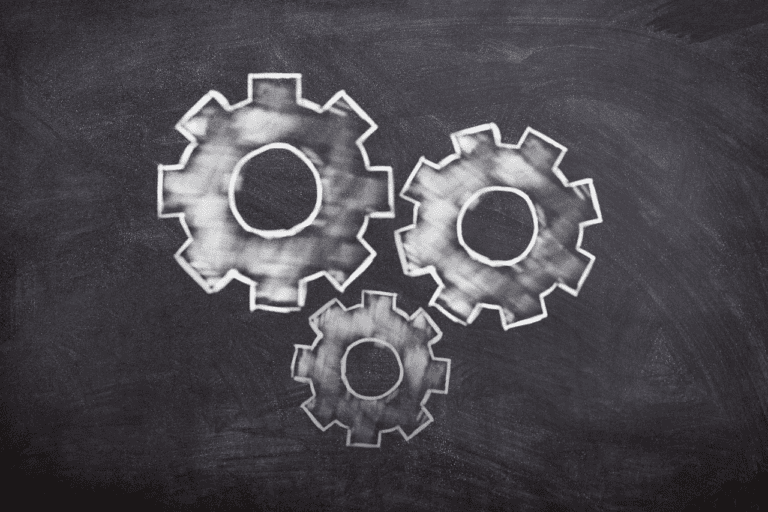Enhancing Productivity in a Home Office Setting
In the current landscape of remote work, the home office has become an essential space for many professionals. Enhancing productivity in this setting is a key concern for individuals striving to maintain efficiency and focus.
The ability to create a productive environment within the confines of one's home poses unique challenges, but also offers opportunities for optimization. As we navigate the complexities of blending work and home life, there are strategies and considerations that can significantly impact our ability to perform at our best.
These strategies encompass various aspects of our work environment and habits, each playing a crucial role in shaping our overall productivity.
Key Takeaways
- Strategically arrange furniture, equipment, and supplies in the home office to optimize workspace and productivity.
- Use time management techniques such as the Pomodoro Technique and task batching to effectively manage time and prioritize tasks.
- Minimize distractions by creating a designated work space, setting boundaries with family members or housemates, and implementing strategies to reduce digital distractions.
- Establish a routine and set boundaries by designating specific work hours, communicating availability to others, and creating consistent daily routines to create a sense of regularity and minimize interruptions.
Optimizing Your Workspace
Optimizing your workspace involves strategically arranging furniture, equipment, and supplies to maximize efficiency and comfort in your home office environment. To maximize efficiency, it is crucial to organize your supplies in a manner that allows for easy access and minimal distractions during work hours.
Start by categorizing your supplies based on frequency of use and importance. Items that are frequently used should be within arm's reach, while those used less often can be stored in easily accessible drawers or shelves. Implementing storage solutions such as labeled containers, file organizers, and desk trays can help maintain a clutter-free workspace, reducing time wasted on searching for necessary supplies.
Furthermore, consider the layout of your workspace to ensure that commonly used items are placed ergonomically. For instance, positioning frequently referenced documents near the primary work area and storing frequently used office supplies within easy reach can significantly enhance productivity.
In addition, establishing a systematic approach to organizing supplies, such as color-coding or utilizing digital organization tools, can further streamline efficiency. By optimizing the arrangement and organization of your workspace, you can create a conducive environment that promotes productivity and minimizes distractions.
Managing Time Effectively
In the quest for enhanced productivity within a well-optimized home office, mastering the art of managing time effectively becomes paramount. To achieve this, consider the following strategies:
- Pomodoro Technique: Utilize this time management method by breaking work into intervals, traditionally 25 minutes in length, separated by short breaks. This technique can help increase focus and productivity by allowing for regular rest periods.
- Time Tracking: Use time tracking tools to monitor how time is spent on different tasks. This can provide valuable insights into where time is being used most effectively and where there may be room for improvement.
- Setting Goals, Task Batching: Establish clear and achievable goals for each day or week. Additionally, group similar tasks together and tackle them during specific time blocks. This method, known as task batching, can minimize distractions and improve efficiency.
Minimizing Distractions
To maintain a high level of productivity in a home office, it is essential to systematically reduce and manage distractions that may hinder focused work.
Creating a designated space solely for work can significantly minimize distractions. This space should be separate from areas associated with leisure or relaxation. It could be a spare room, a corner of a quiet room, or even a well-defined spot at the kitchen table. The key is to establish a clear boundary that signifies when work begins and ends.
Additionally, setting clear boundaries with family members or housemates is crucial. Communicate the specific work hours and the importance of minimizing interruptions during these times. It's also beneficial to establish signals or cues that indicate when it's acceptable to engage in conversation or seek assistance.
Furthermore, implementing strategies to minimize digital distractions, such as turning off non-essential notifications or utilizing website blockers during work hours, can significantly enhance focus and productivity.
Establishing Routine and Boundaries
Establishing a consistent daily routine and clear boundaries within the home office environment is essential for maintaining focus and productivity. To achieve this, consider the following:
- Create a structured schedule: Designate specific times for starting and ending work, as well as for breaks and personal time. This helps establish a sense of regularity and predictability, contributing to a more organized workday.
- Designate a dedicated workspace: Set aside a designated area within your home for work purposes only. This helps to mentally separate your professional and personal life, contributing to better focus and work-life balance.
- Communicate boundaries: Clearly communicate your work hours and availability to those sharing your living space. Setting limits on interruptions during designated work hours is crucial for maintaining productivity.
Establishing consistency and setting limits in a home office environment is vital for creating a conducive work atmosphere. By implementing a structured routine and clear boundaries, individuals can effectively enhance their productivity and maintain a healthy work-life balance.
Prioritizing Ergonomics
Enhancing productivity and well-being in a home office setting requires prioritizing ergonomics to ensure optimal physical comfort and support for sustained work performance. Ergonomic furniture plays a crucial role in this aspect, offering adjustable features to promote proper posture and reduce the risk of musculoskeletal issues.
When selecting office furniture, prioritize ergonomic chairs and desks that provide adequate lumbar support, adjustable armrests, and height settings to align with the user's body proportions. Additionally, investing in a height-adjustable desk allows for seamless transitions between sitting and standing, promoting movement and reducing the strain of prolonged sitting.
Furthermore, incorporating posture-supporting accessories such as footrests, ergonomic keyboards, and mouse pads can contribute to a more comfortable and efficient workspace. Proper positioning of these accessories can help alleviate strain on the wrists, arms, and back, ultimately enhancing overall comfort and reducing the risk of repetitive strain injuries.
Conclusion
In conclusion, optimizing productivity in a home office setting requires careful attention to:
- Workspace design
- Time management
- Minimizing distractions
- Establishing routine and boundaries
- Prioritizing ergonomics
One interesting statistic to consider is that 73% of remote workers report experiencing burnout, highlighting the negative impact of poor productivity habits on mental well-being.
It is crucial for individuals to prioritize these strategies in order to maintain a healthy work-life balance and avoid burnout.







